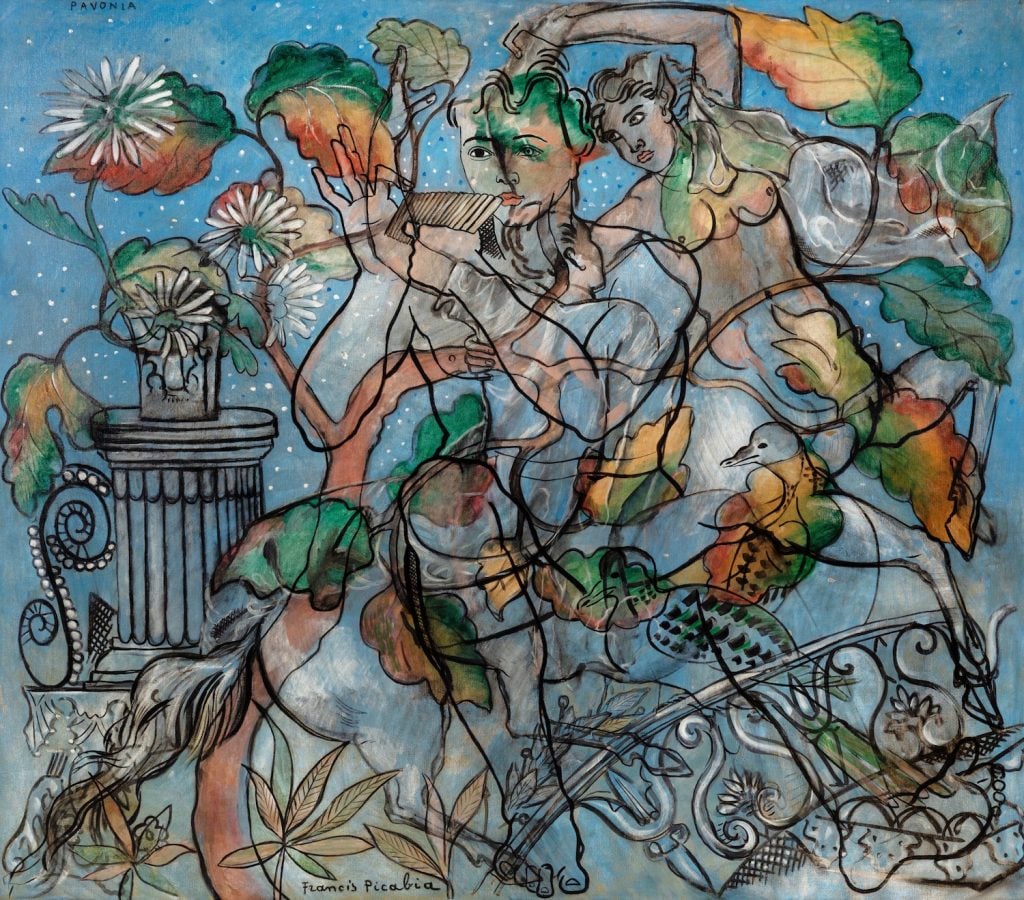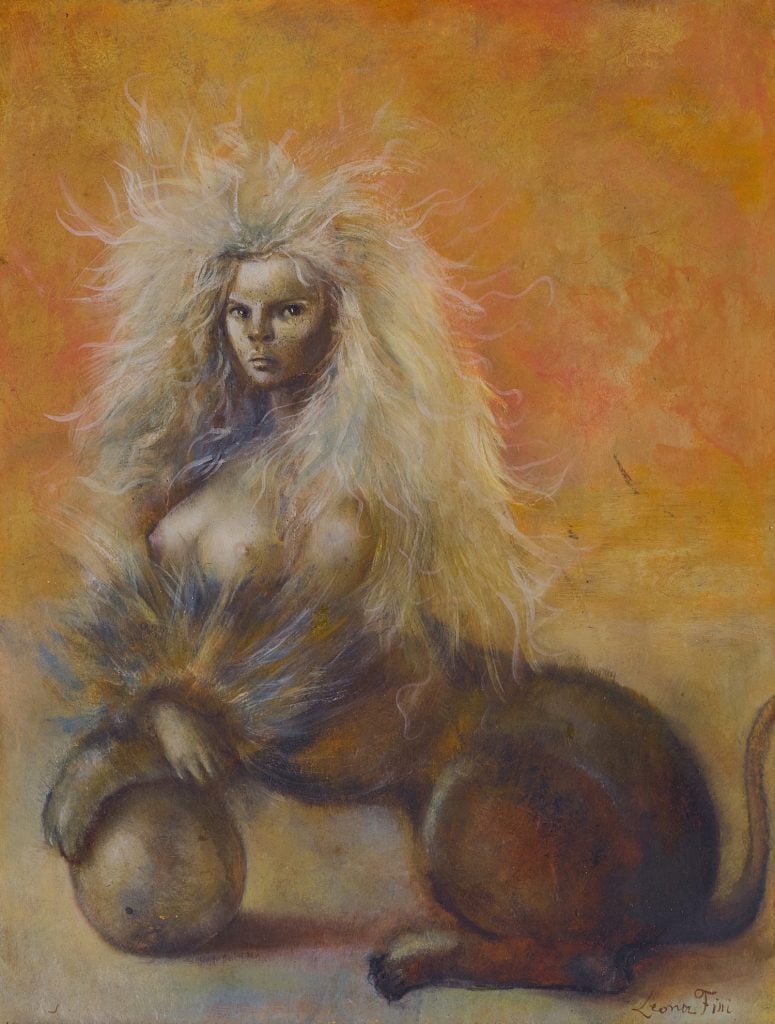Auctions
Led by a Prized Francis Picabia, Sotheby’s First-Ever Surrealist Sale in Paris Nets $36 Million
The event included 23 lots and was highlighted by a 1929 Picabia picture that sold for $10.9 million.

The event included 23 lots and was highlighted by a 1929 Picabia picture that sold for $10.9 million.

Eileen Kinsella

Surrealism, the nearly 100-year-old movement focused on the unconscious desires and impulses of the human mind, is getting some serious love from the art world.
As Kasmin Gallery gives the late Surrealist Dorothea Tanning an in-depth look, and while Tate in London hosts a major survey of the movement that traveled from the Met in New York, Sotheby’s hosted last night, March 16, a dedicated and successful $36 million (€33 million) evening sale in Paris.
Surrealism often gets a spotlight at London evening sales. Christie’s, for example, included a bundle of works at the end of its March 1 sale that moved from Shanghai to London.
But Sotheby’s “Surrealism and Its Legacy” auction was the first dedicated Surrealist auction in Paris, according to the company.
The event “comes at a time when Surrealism is the subject of increasing international attention from institutions and collectors alike,” the auction house said in a statement.
It also said the event was staged “in the very same rooms” as a landmark 1964 show marking the movement’s 40th anniversary, which included “many of the leading artists themselves in attendance.”

Rene Magritte, Le paysage fantôme (1928). Image courtesy Sotheby’s.
The auction included 23 lots, all but one of which sold for a 95.7 percent sell-through rate. (By comparison, the Surrealist portion of Christie’s sale included 20 lots, all of which sold. Its final total was $52 million, or £39.9 million.)
The top-selling work was Francis Picabia’s Pavonia (1929), which fetched $10.9 million (€10 million), setting a new record for the artist that surpassed a previous high of $8.8 million achieved in November 2013, according to the Artnet Price Database.
The painting, which Sotheby’s called “one of the most stunning and majestic examples of Picabia’s iconic transparencies,” was commissioned from the artist by dealer Léonce Rosenberg at the same time that he hired several other artists to decorate his Paris apartment.
Another Picabia figured in the top lots when Nu de dos (1940–42), which had been in the same private collection since 1989, sold for $3.5 million (€3.3 million). The work belongs to the artist’s “Female Nudes” series, painted during Would War II, and was inspired by erotic 1930s-era photos published in magazines. Picabia’s rendition, which paid attention to the details and lighting of the original photograph, proved controversial.
The second-most expensive offering was the Hans Arp painting L’O et l’U de l’oiseau (1928), which sold for $3.8 million (€3.4 million). Wooden reliefs such as this one are among Arp’s most sought-after works.

Leonor Fini, Sphinx pour David Barrett (1954). Image courtesy Sotheby’s.
Four Magritte works from his five decade-career came up in the sale, contributing $7.8 million (€7.1 million) to the bottom line. They also accounted for four of the ten priciest lots.
The top Magritte was Le paysage fantôme (1928), which sold for $2.3 million (€2.1 million), double its high €1 million estimate. It was followed by Le palais de la courtisane (1929–30), which sold for $2.5 million (€2.1 million) and was once in the collection of famed poet and Magritte friend Joë Bousquet. The two met in 1940 after Bousquet was badly wounded in World War I and left paralyzed.
Meanwhile, a later Magritte work, a bronze titled La Joconde (Mona Lisa) that was conceived in 1967 and cast in bronze that year in an edition of five, sold for $1.9 million (€1.7 million). The sculpture was created especially for gallery owner Alexander Iolas.
Le bon temps, a 1966 collage on paper depicting the artist’s famous bowler-hatted figure being kissed by the Moon, sold for $1.36 million (€1.2 million).

Yves Klein, Anthropométrie Sans Titre (ANT 20) (1962). Image courtesy Sotheby’s.
A special section of the sale was devoted to the work of female Surrealists, who have been garnering increased attention in recent years.
Included in the auction were long-unseen works by Dorothea Tanning (whose Mêlées nocturnes from 1958 sold for $621,000 [€567,000]) and Leonor Fini (whose Sphinx for David Barrett from 1954 sold for $131,000 [€119,700]).
A compelling work titled Chambre secrète sans ferrure (1966) by Toyen, a lesser-known name in the movement, also sold, for $1.6 million.
Several lots by artists influenced by Surrealism, included Lucio Fontana and Yves Klein, were also in the sale.
Fontana‘s Concetto Spaziale (1965) from his Tagli series achieved $1.4 million (€1.3 million), while Klein’s Anthropométrie Sans Titre (ANT 20) (1962), a signature blue painting from a private Swiss collection, sold for $2 million (€1.97 million). It was backed by an irrevocable bid, so was guaranteed to sell.